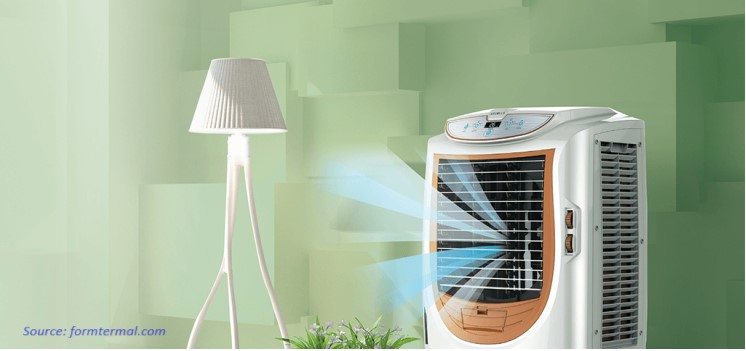
Australia Heat Exchangers Market by Type (Shell & Tube, Plate & Frame, Air Cooled, and Others), by Material (Metals, Alloys, and Brazing-CLAD), and by End User (Chemical, Energy & Power, Heating, Ventilation, Air Conditioning, and Refrigeration (HVACR), Food & Beverage, Pulp & Paper, and Others)– Opportunity Analysis and Industry Forecast, 2024–2030
Industry: Retail and Consumer | Publish Date: 22-Mar-2024 | No of Pages: 118 | No. of Tables: 86 | No. of Figures: 51 | Format: PDF | Report Code : N/A
Market Overview
The Australia Heat Exchangers Market size was valued at USD 287.2 million in 2023, and is predicted to reach USD 560.5 million by 2030, with a CAGR of 9.4% from 2024 to 2030.
Heat exchangers are apparatuses designed to transfer heat between fluids without direct contact, extensively utilized across industrial, commercial, and residential domains, including HVAC systems and refrigeration units, to effectively heat or cool fluids or air. They operate by enabling heat to traverse through a barrier, such as a solid wall or a series of plates or tubes, facilitating various tasks such as heating water in boilers or cooling air in air conditioning systems.
These devices are available in diverse designs tailored to specific requirements, ranging from basic radiator coils to intricate systems found in chemical processing plants and power generation facilities. They play indispensable roles across numerous industries and applications, regulating air temperatures in buildings, facilitating steam production in power plants, controlling temperatures during chemical reactions, and aiding in food processing, among other functions. Moreover, they serve as critical components in automotive cooling systems and boast widespread applications in aerospace, marine, and wastewater treatment sectors, where they play a pivotal role in ensuring efficient thermal management and energy transfer.
Growing Industrialization and Urbanization in Australia Drive Market Growth
The burgeoning industrialization and urbanization in Australia are key drivers propelling market growth. As urban areas expand and industrial sectors develop, there is a correlated surge in demand for various goods and services, including infrastructure, commercial buildings, and residential spaces.
This escalating demand necessitates efficient heating, ventilation, and air conditioning (HVAC) systems, in which heat exchangers play a pivotal role. These devices are indispensable for heat transfer and thermal management in HVAC systems, driving market growth as they become integral components of modern building infrastructure.
Furthermore, the rising industrial activities in sectors such as manufacturing, construction, and mining create additional demand for heat exchangers in various industrial processes, further contributing to market expansion in Australia.
Growing Demand for Renewable Energy in Australia Drive Market Growth
The increasing demand for renewable energy in Australia is a significant catalyst for market growth. With a growing emphasis on sustainability and reducing carbon emissions, there is a notable shift towards adopting renewable energy sources such as solar, wind, and hydroelectric power. Heat exchangers play a crucial role in renewable energy systems by facilitating heat transfer, thermal storage, and energy conversion processes.
As the adoption of renewable energy technologies continues to rise, there is a corresponding increase in the demand for heat exchangers in various applications, including solar thermal power plants, biomass energy facilities, and geothermal power generation. This surge in demand for heat exchangers drives market growth in Australia as industries and households transition towards cleaner and more sustainable energy solutions.
Competition from Alternative Technologies Restrains Market Growth
Competition from alternative technologies acts as a restraining factor on market growth in Australia. As industries and consumers seek more efficient and cost-effective solutions for heat transfer and thermal management, alternative technologies such as direct heat exchange methods or alternative cooling systems emerge as viable options.
These technologies may offer advantages such as lower initial costs, simpler maintenance requirements, or better performance in specific applications, posing a competitive threat to traditional heat exchangers. Consequently, heat exchangers manufacturers must innovate continuously to stay competitive and address evolving market demands. Failure to adapt to emerging technologies and meet customer preferences may result in a loss of market share and hinder overall growth in the heat exchangers market in Australia.
Integration with Renewable Energy Systems Creates a Market Opportunity
Integration with renewable energy systems presents a significant market opportunity by aligning with global sustainability goals and addressing the increasing demand for clean energy solutions. As the world transitions towards renewable energy sources to combat climate change and reduce carbon emissions, there is a growing need for technologies that can efficiently harness and utilize renewable resources such as solar, wind, and geothermal energy. Heat exchangers play a crucial role in renewable energy systems by facilitating heat transfer, thermal storage, and energy conversion processes.
By integrating heat exchangers into renewable energy infrastructure, companies can enhance the efficiency and performance of these systems, thereby increasing their attractiveness to consumers and driving market growth. Additionally, government incentives and subsidies aimed at promoting renewable energy adoption further bolster the market opportunity for heat exchangers in this sector.
Competitive Landscape
Several market players operating in Australia’s heat exchangers market include Alfa Laval AB, Johnson Controls International plc, Carrier Global Corporation, Lennox International Inc., Trane Technologies plc, API Heat Transfer Inc., Kelvion Holding GmbH, Xylem Inc., Danfoss Group, and General Electric Company among others. These companies are adopting various strategies such as product launches to remain dominant in the heat exchangers market.
Key Market Segments
By Type
-
Shell & Tube
-
Fixed Tube Heat Exchangers
-
U-Tube Heat Exchangers
-
Floating Head Heat Exchangers
-
Other Shell & Tube Heat Exchangers
-
-
Plate & Frame Heat Exchangers
-
Gasketed Plate & Frame Heat Exchangers
-
Welded Plate & Frame Heat Exchangers
-
Brazed Plate & Frame Heat Exchangers
-
Other Plate & Frame Heat Exchangers
-
-
Air Cooled
-
Forced Draft Heat Exchangers
-
Induced Draft Heat Exchangers
-
-
Others
By Materials
-
Metals
-
Alloys
-
Brazing-CLAD
By End User
-
Chemical
-
Energy & Power
-
HVACR
-
Food & Beverage
-
Pulp & Paper
-
Others
REPORT SCOPE AND SEGMENTATION:
|
Parameters |
Details |
|
Market Size in 2023 |
USD 287.2 Million |
|
Revenue Forecast in 2030 |
USD 560.5 Million |
|
Growth Rate |
CAGR of 9.4% from 2024 to 2030 |
|
Analysis Period |
2023–2030 |
|
Base Year Considered |
2023 |
|
Forecast Period |
2024–2030 |
|
Market Size Estimation |
Million (USD) |
|
Growth Factors |
|
|
Companies Profiled |
10 |
|
Market Share |
Available for 10 companies |
|
Customization Scope |
Free customization (equivalent up to 80 working hours of analysts) after purchase. Addition or alteration to country, regional, and segment scope. |
|
Pricing and Purchase Options |
Avail customized purchase options to meet your exact research needs. |
KEY PLAYERS
-
Alfa Laval AB
-
Johnson Controls International plc
-
Carrier Global Corporation
-
Lennox International Inc.
-
Trane Technologies plc
-
API Heat Transfer Inc.
-
Kelvion Holding GmbH
-
Xylem Inc.
-
Danfoss Group
-
General Electric Company




 Speak to Our Analyst
Speak to Our Analyst


































